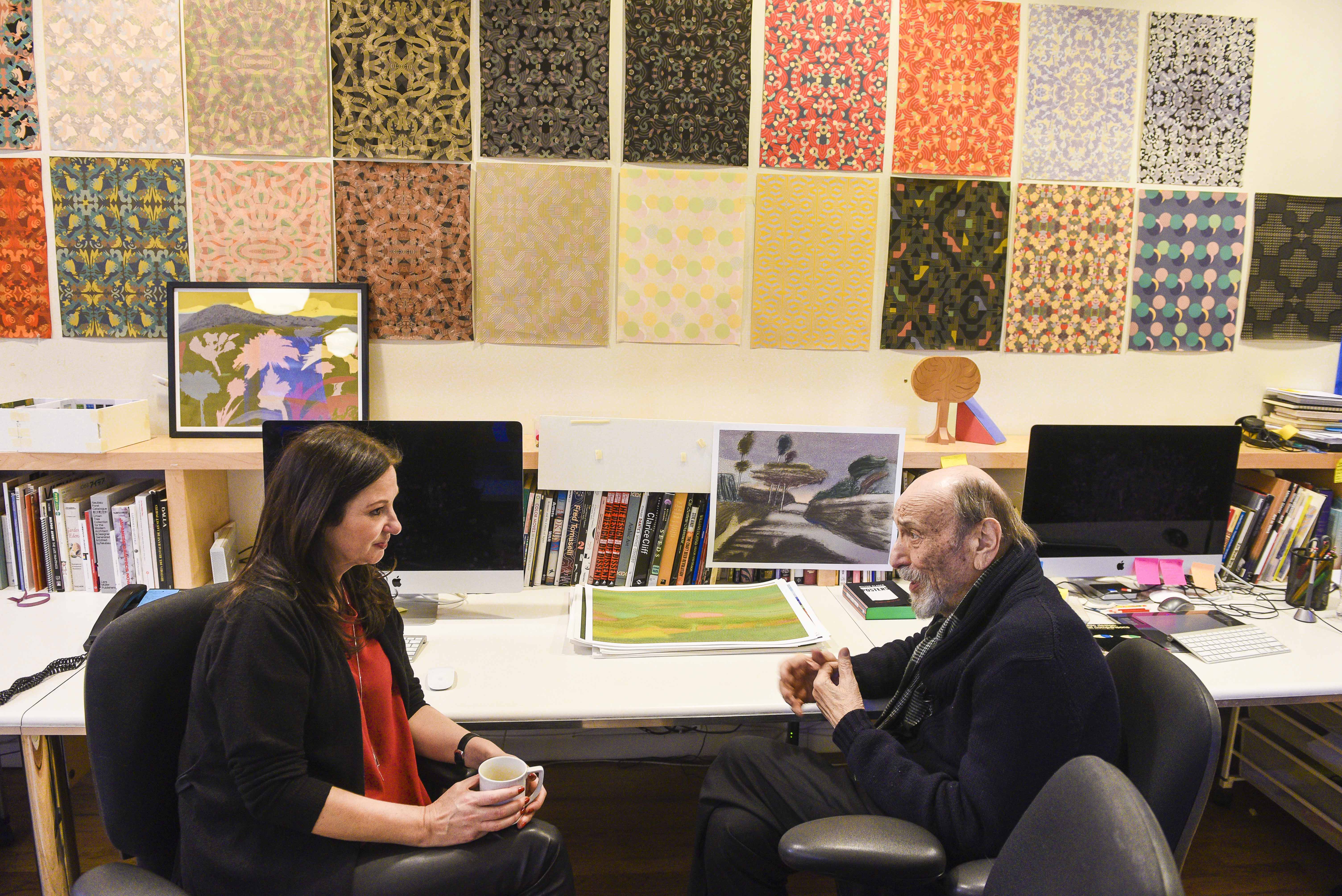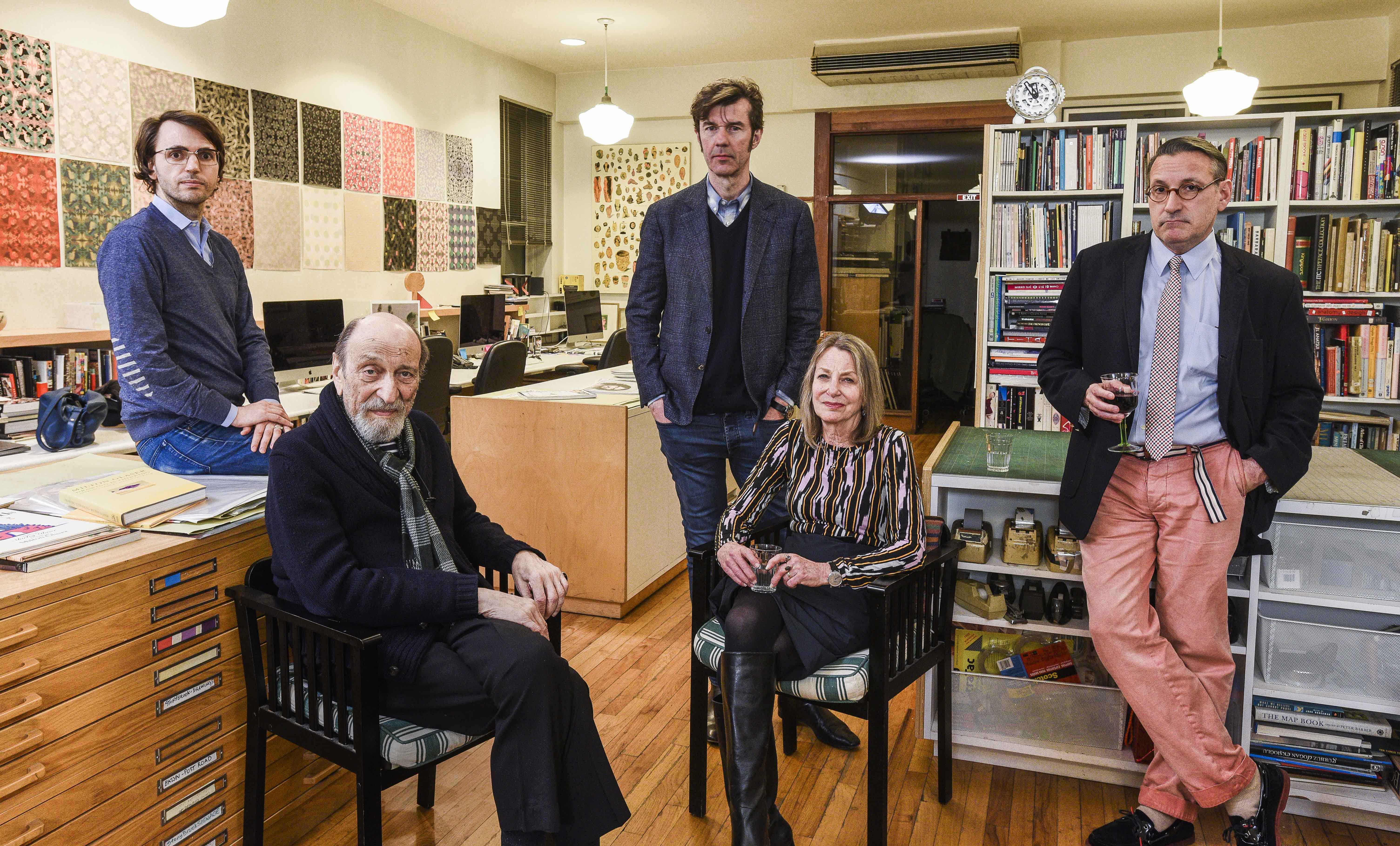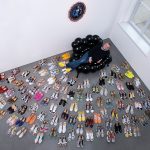
Chip, you designed more than 1000 book covers, from Murakami to Crichton. Stefan, you did legendary record sleeves, including covers for the Rolling Stones, Lou Reed and David Byrne. Do you think that people will buy albums and books because of the cover? What influence in the decision-making process of a buyer does the cover have?
Sagmeister: In terms of album covers, Paula designed many, many more than I did. If you go to the largest vinyl store in NY, Rough Trade in Brooklyn, you will see that few people were even alive the first time vinyl peaked. Most buyers there are in their twenties. Many of them buy records for the covers it, and many will keep it in the virtual wrapper and will download the music digitally, basically preserving the physical records as artifacts. It’s a different audience from what it used to be. It’s much smaller, not a mass-audience.
Scher: I am sort of shocked by this, because like all of these albums that I forgot I designed have been resurrected. I get people that I don’t know send me Instagram pictures of finding me in record stores. It is almost like a crazy hunt. I dumped my records a long time ago. And Stefan’s right, they are kids, they are in their twenties. They love the form. I think it has to do with–there is this odd connection that I have always missed, of the notion of playing the music and holding the album.
Sagmeister: Music videos. I always felt it was too much. If you hear a song for the first time with the video, I have that stupid video in my head. I don’t want the video in my head, I want the music. On the record sleeve you may see what the band looks like, but more importantly you get a feel of what they are about. And the rest comes to you as you listen to it.
Kidd: It’s the theater of the mind, and the audience person is building this stuff in their head. It’s the way radio works and why radio still exists. Because you are picturing the people playing the music.
Scher: You use that one art form to package another art form. There is something so total about this experience.
Sagmeister: And what it contains is highly emotional but not visual. But we are making the visual for it. Which I think is ultimately the reason why the album cover was always a better medium than the film poster. Because the film poster is packaging something that is visual already and it’s much more promotional. With the film poster, you are reducing an incredible visual experience down to a single image. It’s a much more boring task than to take something non-visual and visualize it.
Let’s talk a little bit about the creative process. What does it take to create a unique brand identity, a logo? Is a good idea something that strikes you in a moment of epiphany, or do you sometimes work on ideas for weeks?
Glaser: The question always is: to what end? You get the most brilliant idea to sell a product that is essentially harmful to the person who uses it. Because economy is a capitalist society, it’s built around constant consumerism, and people constantly buy. We are working within a structure we don’t admire, that we realize is harmful, but what choice do we have? One must be a little more comprehensive than the false question of the imagination. Not: Where does the idea come from? But rather: What is the ultimate purpose of the idea? Who does it benefit? I don’t think you can be in this profession without raising that question to yourself. And if you follow the logic of who benefits, you often end at the kind of contradiction that makes it very difficult to work without questioning that before you begin.
Jan, would you agree?
Wilkers: Oh yes, I think we all, in phases, arrive at this point where we question what we do and why we do it. In answer to your initial question about the process: most of the time it’s hard work for me. It’s not that it gets easier the longer you do it. That’s what it’s like for me, at least. I need time for my ideas.
Sagmeister: I think all of us have developed some tricks over the years to get out of a hole. If nothing comes, I guess most of us have a number of strategies to turn that nothing into something.
Scher: When you are working on projects and they become repetitive, you become facile. And that’s very dangerous because it means that your work starts to become repetitive. And so, to make a breakthrough, you have to make up something new.
Kidd: If you are not careful, you become Sting. You look at The Police and you look at Sting–it’s a big difference.
Have you ever been in the situation that you met a client and had no idea?
Scher: Always. I often don’t even remember the client’s Name.
I am not a good salesperson, but I am a really good teacher.
I teach my clients how to see, I often treat them like students. It works! – Paula Scher











